Seattle's Central District divided over new Amazon Fresh store
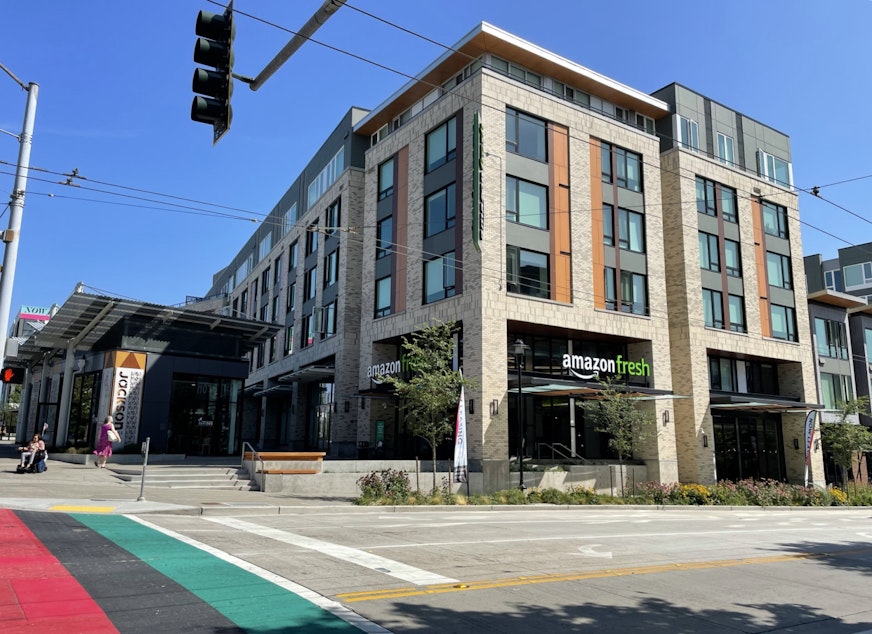
A new grocery store has opened at 23rd and Jackson: Amazon Fresh.
It’s on the same spot where the Red Apple grocery store used to stand. The Red Apple was a popular spot where neighbors ran into each other and said ‘Hi.’ Its closure and demolition became a sore spot for residents who felt they were losing the soul of their neighborhood.
Now, Amazon is trying to prove its grocery store can be just as important to the community.
When it opened last year, the Jackson apartments brought hundreds of new people to this part of the Central Area/Central District.
One newcomer to the neighborhood is Jansen. He doesn’t want to give his last name because he works in cybersecurity, and that can attract hackers.
He says it’s a great place to live.
“I’ll put it to you this way. When me and my lady saw the new place going in there, I was like 'There’s just going to be a bunch of gentrifying yahoos that are going to live in that building, it’s too expensive for us,' " he says. "And then we saw that they lowered their prices enough that we could afford it, I was like, 'Hey, let’s go be those yahoos.' ”
Sometimes, Jansen shops at the Amazon Fresh store below his apartment.
Sponsored
Amazon has been building its own grocery stores lately, each one testing out a different flavor of technology. This one uses intelligent grocery carts.
Jansen says he doesn’t love the store because it’s kind of small, but it’s convenient. “It’s great if you just need to grab spinach for a smoothie,” he says.
RELATED: Sometimes pushy, sometimes distant, Amazon keeps businesses near its Seattle HQ alive
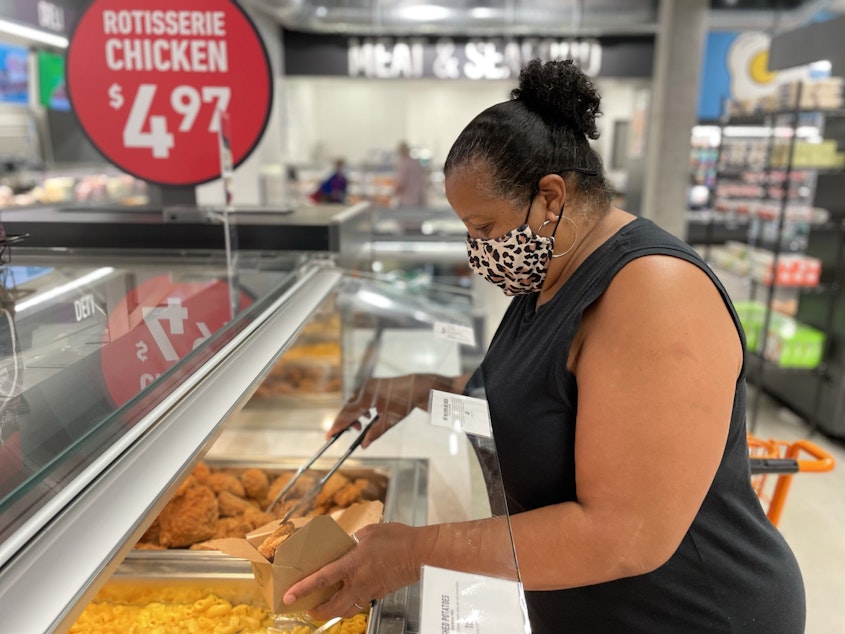
The new development on this block, with its apartments and grocery store , draws mixed feelings from Victoria Beach. She’s 62 years old, and she grew up in the Central Area. And while she says her ideal neighborhood would include people from all races, she also says it’s painful to see so many white residents moving into what used to be a predominantly Black neighborhood. It reminds her of all the Black families that have moved away. “It makes me sad because this was ours. And nobody wanted to live here back then.”
Sponsored
When Amazon Fresh prepared to open, Beach applied for a job at this grocery store. Later, she backed out, concerned about what her friends would think. “There were a lot of reasons why I didn’t take it," she says. "For one thing, I felt like a traitor.”
Before Amazon moved in — before this development was even fully designed — there were public meetings about what would be built here. Some residents expressed concern; they wanted to know if the development would be good for them.
I ask Victoria Beach to go shopping with me at Amazon Fresh and to tell me what she sees.
“I’m just curious to see where this is gonna go,” she says as we ride down the escalator into the store.
Inside the store, Beach pushes her cart up and down the aisles. “And that’s a good deal right there, French bread 89 cents,” she says.
Sponsored
She’s looking for foods she likes. When she can’t find things, we try asking Alexa. There’s a smart speaker mounted on a pole in one of the aisles.
“Alexa, where do you find catfish?” asks Beach.
“I’m not sure where to find catfish. Please check with a store associate for help,” Alexa responds.
“Alexa, where do you find sweet potatoes?” she tries again.
“I’m not sure where to find sweet potatoes. Please check with a store associate for help.”
“Hey Alexa, where do I find wine?"
“You can find wine at aisle 5.”
“What does that tell you?” I asked Beach.
“It tells me that she’s not Black," she says, laughing.
"Hey Alexa, where do I find black eyed peas?” she tries again.
“Find black eyed peas at aisle 1," Alexa responds.
“Well, maybe she’s half Black," says Beach.
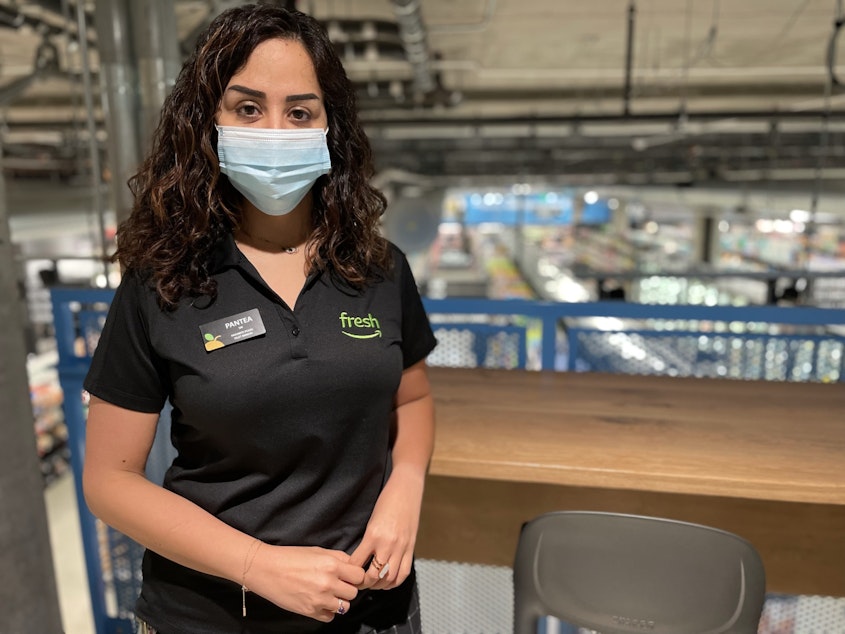
The store manager here is Pantea Naghibi. She told me when customers can’t find what they want, they’re invited to use Amazon's app to post a suggestion. And when the suggestions pile up, she says the company listens.
“One specific item in this neighborhood is collard greens," Naghibi says. "Originally when we launched, we didn’t have that item and it was a shortage. But due to customers’ high demand, now we’re able to provide the customers with collard greens and they’re very, very happy.”
Victoria Beach appreciated the prepared collard greens in the hot bar. But having the right foods at the right prices is only half of the picture. The other half – is about economics. Who benefits from the jobs here?
“A lot of the employees are Black. A lot of them. But not customers,” Beach observes as we walk through the store.
Jobs are one of Amazon’s core promises to this community. It doesn’t offer union jobs; in fact, it fights unionization efforts at its workplaces. But it does promise that hard work will be well rewarded.
I heard a lot of stories from workers at this Amazon Fresh who don’t plan to stay in their current position for years and years. Instead, these employees want to climb the ladder, or use Amazon’s benefits to advance their education in some other direction.
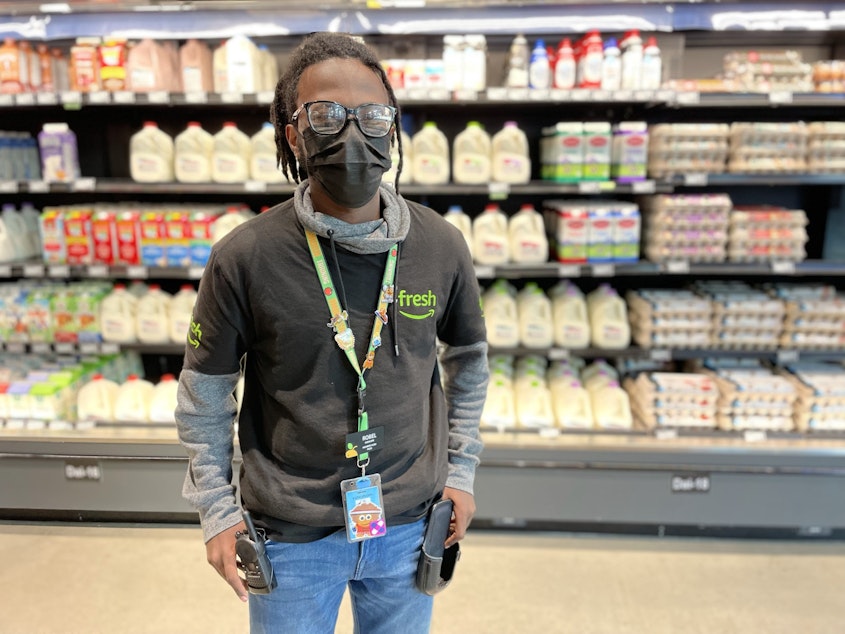
“Pretty much I’m hoping to, next summer-ish, be able to get an internship with Amazon," said Robel Teshome, a biochemistry major at Seattle University who works at Amazon Fresh. Teshome lives in the neighborhood with his family and walks to work.
“I would love to be part of the team of Amazon graphic designers,” says Dany Curbelo, a Cuban immigrant who lives in the apartments upstairs with his family.
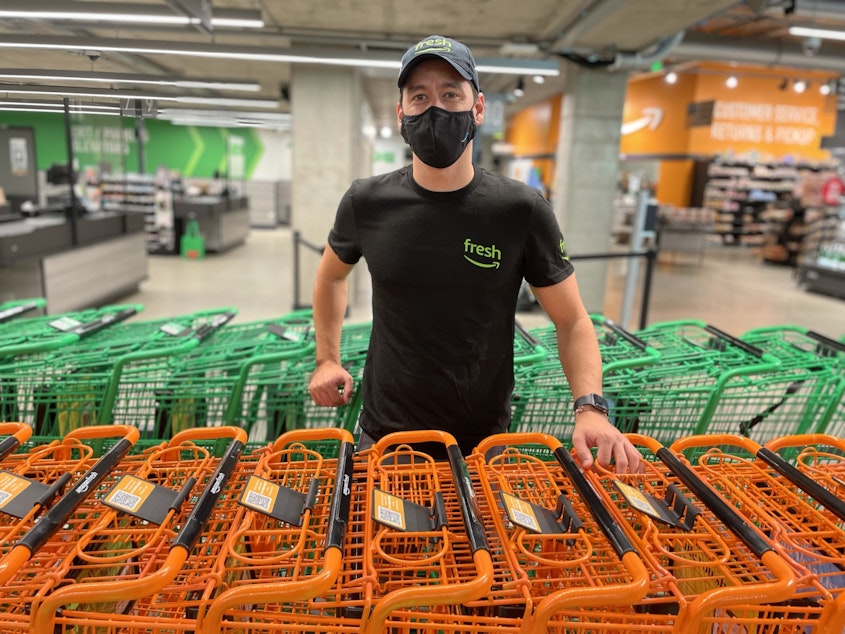
Mel Shen is a manager at Amazon Fresh. She encourages workers to think along those lines.
“One of the big questions they ask is for that opportunity. They’ve worked in different grocery stores and they feel that they don’t have that much room for growth," she says. "Whereas at Amazon, because it’s not just a grocery store, because there’s so many different business lanes in the company, you’re not locked into being in a grocery store, there’s opportunities everywhere. You just have to really go and find those.”
Shen speaks from experience. She’s been here just one year, but she recently applied for a job with Amazon Web Services, a completely different branch of the company. She got the job and starts next month.
Not every grocery worker can advance their career in this way. That’s one reason Amazon started offering to pay for its frontline workers' college tuition – after they’ve been there for three months.
Amazon’s arrival in the Central District is the latest in a series of big changes in this neighborhood. There are a lot of new apartments and businesses – some of them Black-owned.
It’s hard not to compare jobs at Amazon Fresh to the jobs at the old Red Apple grocery store that used to be on this spot before the block was redeveloped. At the Red Apple, people stuck around for years. Some of them served as cashiers for two different generations of customers.
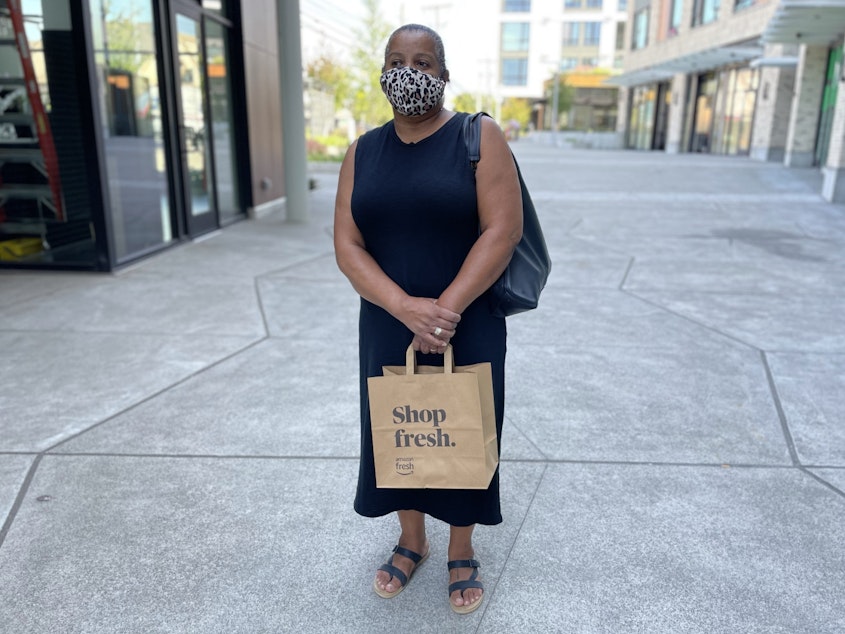
After my shopping trip with Victoria Beach, I asked her what she thought about Amazon’s impact in the Central District.
“You know, that is true that they’ve brought jobs to the neighborhood," she says. "But they owe that to us, because they’re taking our neighborhood. So they should give back in that way."
Beach says she doesn't think of the employees that work at Amazon Fresh as traitors.
"A lot of them I see are young and they don’t have the history I have," she says. "I’m happy that they have a job. And even people that shop here that are Black. I have nothing against them. I mean, I’m not telling anybody not to shop here. But..." Beach pauses before continuing, "It’s not for me.”
Amazon’s spokespeople have made clear this grocery store welcomes everyone, and the company has learned from past controversies.
For example, its stores accept SNAP benefit cards, so that people on low incomes can shop there. And in June, the company announced it would donate a million dollars to non-profits groups in the neighborhood.
The demographic changes happening here were set in motion long before Amazon arrived, and community members say Amazon is now just one of many newcomers that will have to work to build trust.




